Financial Growth Tips for Dentists: 9 Tips for Managing & Boosting Revenue


This post was originally published on August 27, 2015, and updated on February 21, 2024.
When managing dental practice finances, there are many moving parts. There are income, overhead costs, fees, taxes, insurance reimbursements, and more. Even if you’re the best dentist in town, if you don’t manage your money right, you won’t be able to build and maintain a profitable, financially sustainable practice while still providing top-quality patient care.
I work with many dental practice owners, helping them boost their profitability by increasing their online presence. For this post, we contacted several dentists for their feedback on best practices for financial planning for dental practice. Based on what we've learned from working with many dentists, we’ll explore the nine essential things dentists must do to optimize their practice’s financial health and meet their financial goals.
If you'd prefer a summary of the post and to look at some cool pictures, scroll to the bottom, where you can view the infographic.
BONUS DOWNLOAD: 5 Ways to Market Dental Implants Like a Pro! Grab our free guide and learn exactly how to get in front of your target implant market with our free guide.
1. Hire an Expert to Help You
One of the main actions dentists recommend for managing a practice’s finances is hiring a financial expert, preferably one with specific dental practice expertise. Most dentists are not financial experts and can’t be expected to know how to manage their money efficiently. Hiring an expert such as a certified public accountant is especially important for dentists come tax time.
Here’s what a few seasoned dentists told us about hiring an expert.
Hire an expert. Use them a lot or a little, but get professional advice. Too many dentists think that because they’re smart in one area, they’re also an expert in finances. Set short-term, medium-term, and long-term goals and stick to them.
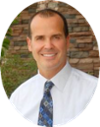 Loren Anderson, DDS
Loren Anderson, DDSAnderson & Lintz Dental
You should find a consultant who can sit down with you and make certain that you aren't losing money due to poor management. Most dentists are not great managers of money, but that's why you hire people who are. What affects your profitability the most is that the dentist operates without a full knowledge of where their dollars are going. Working harder won't solve the problem until you diagnose what the problem(s) really is (are).
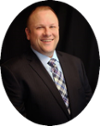 Daniel Whittaker
Daniel Whittaker DDS
One word of warning here is that the financial expert you hire should not be your buddy, as this can compromise the quality of their advice (and your financial success.) One dentist told us, “It took me way too long to realize that I didn't really have a financial adviser, all I had were ‘friends’ selling me insurance.”
2. Use Dental Accounting Software
Even if you have an accountant to advise you on financial matters, you still need to give them the hard data they need to assess your practice’s finances. Using the right software, you can easily track expenses, revenues, and other financial information to give your accountant an accurate view of your income and expenses.
Some dentists use accounting software like QuickBooks or Xero; there are also dedicated dental practice management software solutions such as Curve Dental or Total Dental. Depending on the dental PM software you use, the software may have its own accounting features, or it may integrate with other accounting software such as QuickBooks.
3. Track Your Important Practice Metrics
Track important business metrics that affect your profits to stay on top of your day-to-day and month-to-month financials. One of the most crucial pieces of data to pay attention to is your P&L (profit and loss) statement.
The trick is to get to a certain amount of production so that key factors fall within certain percentages every month on your P&L. Wages for staff should be around 23-25%, labs 4-6%, supplies 5-8%, etc. Getting an accurate monthly P&L and studying it carefully is ESSENTIAL. It's hard to get an accurate one unless you are fastidious in maintaining your records.
DDS
Some of the other smaller data pieces that affect your P&L (and which you should also pay attention to) are as follows:
- Fixed expenses: Overhead costs that do not change monthly (utility bills, rent/mortgage, loan payments, etc.)
- Variable expenses: Expenses that may change based on your monthly production (lab bills, supply bills, staff pay, etc.)
- Over-the-counter (OTC) collections
- Ratio of period production vs. overall hygiene production
- Doctor and hygiene production per hour
- Unscheduled time units
- Accounts receivable
According to Dentistry IQ articles by Theodore C. Schumann, CPA, CFP, and Dayna Johnson (articles linked below), some good benchmarks for these metrics are as follows:
- OTC collections should be 45% to 55% for fee-for-service practices.
- Perio/hygiene production should be at least 30% perio services.
- The average practice may lose as much as 10% of its patient base through normal attrition — aim for 15% new patient growth to offset this.
- Average dentist production per hour is $375, with about 20% achieving over $500 per hour.
- The average hygiene production per hour is about $100.
- In a typical practice, an increase of $50 per hour for the doctor represents about a $73,000 increase and an additional profit of about $60,000.
Read 10 daily practice statistics every dentist should review and The 5 stats every dental practice should monitor for more information on these important dental financial stats. The Dental Economics article 5 Steps to producing effective practice financial statements (by Charles Blair, DDS, and John McGill, MBA, CPA, JD) is a useful article as well.
4. Payment Plans and Insurance Coverage
Cash flow plays an essential role in dental practice finances and the long-term success of your practice. We’ll break this down into two main areas: billing and insurance.
Patient Billing
Some of your patients may not have dental insurance or limited coverage, which leaves them with a balance after their treatment. When that’s the case, dental practices can and should look at their collection practices and how they can keep the cash flowing.
One thing that may be helpful is having a system in place to create individualized payment plans for patients. With a payment plan, it’s easy for patients to pay their balances in a timely manner. They’re less likely to be delinquent or to default on payments, which means you’ll have more cash flowing through your practice. While individual patients may need you to finesse a payment plan, creating a framework for payment plans is useful. Consistency will help your staff address patient concerns and collect payments.
On a related note, you’ll also need to manage insurance billing and payments well. Proper billing procedures minimize claim denials and, like payment plans, help keep the revenue flowing.
Insurance Coverage
When you own a dental practice, your finances may be impacted. Unexpected events such as the COVID-19 pandemic may impact your practice revenue. It’s important to protect yourself by purchasing insurance coverage.
Here are some insurance types you may need to protect yourself, your employees, and your practice.
- Dental malpractice insurance
- General liability
- Employment practices liability insurance
- Business owner’s insurance
- Business interruption insurance
- Business overhead expense disability
You may not be required to carry business overhead expense disability coverage, for example. Still, it’s a type of insurance that can cover your overhead if you’re unable to work.
5. Keep an Eye on Other Important Numbers
We’ve already mentioned some statistics, but we should mention a few others that can help you understand your practice's revenue and profitability. Here are a few things to consider.
Patient Statistics
Keeping track of patient statistics is a must for every dental practice. Tracking these things will help you understand how your patients impact your practice's finances.
- Number of patients per day
- Appointment cancellation rate
- Number of new patients per month
- Patient retention rate
- Treatment presented vs. treatment accepted ratio: One dentist told us, “Self-confidence, not charisma, looks or personality; but self-confidence leads to acceptance of treatment recommendations.” (Ratio should be between 70% and 90%.)
- Inquiries vs scheduled new patient appointments
These statistics can help you understand how successful your practice is at attracting new patients and retaining existing ones, as well as treatment compliance and cancellations. They can also give you a big-picture view of patient satisfaction.
Average Dentist Production Per Month
On a related note, we strongly recommend tracking statistics related to average dentist production per month. For example, how many patients does each hygienist see in a day or a month? How many patients do you and other dentists see?
These numbers indicate your practice capacity and revenue. If you and your hygienists have a lot of idle time, you must step up your marketing efforts to fill those empty blocks in the schedule.
Dental Office Overhead Percentages
Keeping track of your overhead is essential since this is an area where many dental practices can boost their revenue. Here are the steps to calculate your overhead percentage.
- Get a current Profit & Loss report.
- Cross out any expense accounts related to practice owners and dentists.
- Add any remaining expense categories together.
- Divide the result against your total practice income, then multiply that number by 100 to get the percentage.
The average overhead percentage in the dental industry is between 60% and 65%. Cost-cutting can help you reduce expenses and increase your revenue if your number exceeds that.
6. Be Smart About Setting Fees and Salaries
Fees and salaries are critical factors affecting your dental practice’s revenues. Fees are usually calculated by fee averages for the area and based on insurance reimbursement rates for fees. Salaries are based largely on the going rate in your area as well.
Dentists gave us the following advice about setting fees and salaries:
Set fees by obtaining UCR fees and compare. Staff salaries — we pretty much know what the ranges are for each employee. We start at the mid-range. If the employees perform, we raise the salary accordingly.
 Justin Kwon, DDS
Justin Kwon, DDS Green Dental
(In regard to going staff salaries based on area) Washington is ridiculously high, and Utah is super low!
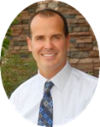 Loren Anderson, DDS
Loren Anderson, DDS Anderson & Lintz Dental
Know your target patient population before you set the price. You should know what your patients need, want and are ready to pay for. Don't be shy in asking for more money for high quality work. Don't be unethical [either]. Share a good portion of what you make with your office mates, as they are like your family. They should feel so warm in that office that they don't feel they are serving you but the patients. That will make them more professional.
 Anirudha Agnihotry, DDS
Anirudha Agnihotry, DDS Dentist and Cochrane author
Regarding setting fees, another dentist warned, “Don’t be the lowest in your area. You don't want to even enter the 'race to the bottom.’”
A dental consultant can help you set appropriate fees for dental services and salaries. You can also use online tools to find UCR fees based on your zip code.
7. Invest in Things That Increase Your Revenue
It's true that you have to spend money to make money. But when it comes to running a practice, where do you need to spend money to maximize revenues?
Ultimately, according to the dentists we talked to, these are things that:
1) Make patients happy, and
2) Boost your practice’s visibility, both online and off
Here’s some specific advice dentists have given us in this area.
- Form relationships with repeat patients by offering them discounts on some services. You’ll get more referrals this way.
- Give back to society by participating in charity events in the community, volunteering, etc. People will notice you and come to your practice as a result.
- Invest in technology, perks, and facility improvements.
- Invest in quality staff: caring, qualified dentists and staff that truly connect to patients and make them feel respected.
- Market your practice online, paying special attention to local SEO, so people in your area looking for your services can find you.
- Manage your online reviews by claiming your practice on review sites, encouraging patients to leave reviews, and responding to all reviews.
These things will show patients you care and ensure that your staff is satisfied and eager to come to work every day.
8. Modernize with Automation
Automation is on the rise in the dental industry. More and more practice owners are using automation tools to streamline everything from appointment reminders to marketing. Most dental practice management software includes some automation options.
What does automation have to do with revenue? For starters, it can take repetitive tasks off your employees’ hands, leaving them more time to interact with patients and create a welcoming environment. NexHealth’s recent study about the state of dental revealed that staff turnover will be the number one concern for dental practices in 2024. When you allow your staff to feel they’re doing meaningful work that makes a difference, they’re less likely to leave.
Automation can also provide patients with a more optimal experience. The number one patient complaint was the difficulty of scheduling or rescheduling appointments. Many patients prefer a digital solution; automation can help you provide them with an easy, minimally stressful way to manage their appointments.
You can also allow patients to complete intake forms online and minimize their time in your waiting rooms. All in all, automation can help you use your staff’s skills and time and provide patients with a better experience to increase patient retention and reduce overspending.
9. Minimize Overhead to Save Money
It may seem like a no-brainer, but businesses and individuals often neglect to save money in our spend-crazy society. You never know when you might need to replace an expensive piece of equipment or deal with a rent hike for your practice. Of course, you will also want to save some of your take-home income for your family.
Basically, you manage your money best by saving 10% of every paycheck or draw you take, starting at day one. Those savings can be the best thing for you and your family forever
In addition to setting aside a portion of your earnings, you can save even more money by minimizing overhead costs. This can be a challenge, as costs to run a practice continue to rise, while insurance reimbursements … not so much.
 Rick Coker
Rick Coker DDS
Top overhead items, at least for me, are payroll, rent, mortgage. In that order. Those are the things that affect profitability most. Although the fastest way to become more profitable is... more revenue, I know some dentists that run very lean offices. Having a lean office is great. Less stress. And you're working to pay yourself instead of the overhead.
 Duc Tang, DDS
Duc Tang, DDS Promenade Center for Dentistry
Equipment and staffing are so expensive that if a dentist isn’t careful she’ll end up broke. Also, insurances have been slowly reducing reimbursements over the past couple decades relative to inflation
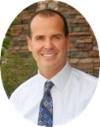 Loren Anderson, DDS
Loren Anderson, DDS Anderson & Lintz Dental
As noted above, your overhead expenses should total no more than 65% of your revenue. Talk to your dental practice consultant about ways to minimize overhead, and consult your CPA about how to save money on your taxes.

Conclusion:
Running a profitable dental practice may seem like a complicated topic. Still, as long as you take the right actions, minimizing your costs and maximizing your profits is not too difficult. You'll need to get organized and make smart financial moves to do these things.
Enlisting the help of experts can get you on the right track and help you maintain excellent records so you know exactly what is going on with your practice’s finances. If you need any help marketing your dental practice, please don’t hesitate to contact us.
- Tyson Downs
- Dental, Marketing
Tyson Downs is the founder of Titan Web Agency, a company specializing in marketing for dental professionals. With an impressive track record of working with over 100 dental practices, Tyson has a deep understanding of the unique marketing needs within the dental industry.
Tyson Downs is the founder of Titan Web Agency, a dental marketing company. With an impressive track record of working with over 100 dental practices, Tyson has a deep understanding of the unique marketing needs within the dental industry. His expertise has helped numerous dental practices flourish by meeting and surpassing their revenue goals, establishing him as a thought leader in dental marketing. His insights and strategies have been featured in esteemed dental publications, including the American Dental Association and the American Academy of Implant Dentistry. Before dedicating his career to helping dental professionals thrive through effective marketing, Tyson honed his skills in SEO and web design as a freelancer, while also gaining valuable experience in the corporate sector. As an alumnus of Brigham Young University, he brings a strong educational background to his entrepreneurial endeavors. Outside of his professional life, Tyson is a devoted father of five, who cherishes time spent with his family, especially when they're all enjoying America's pastime on the baseball field.
Leave a Reply 0 comments
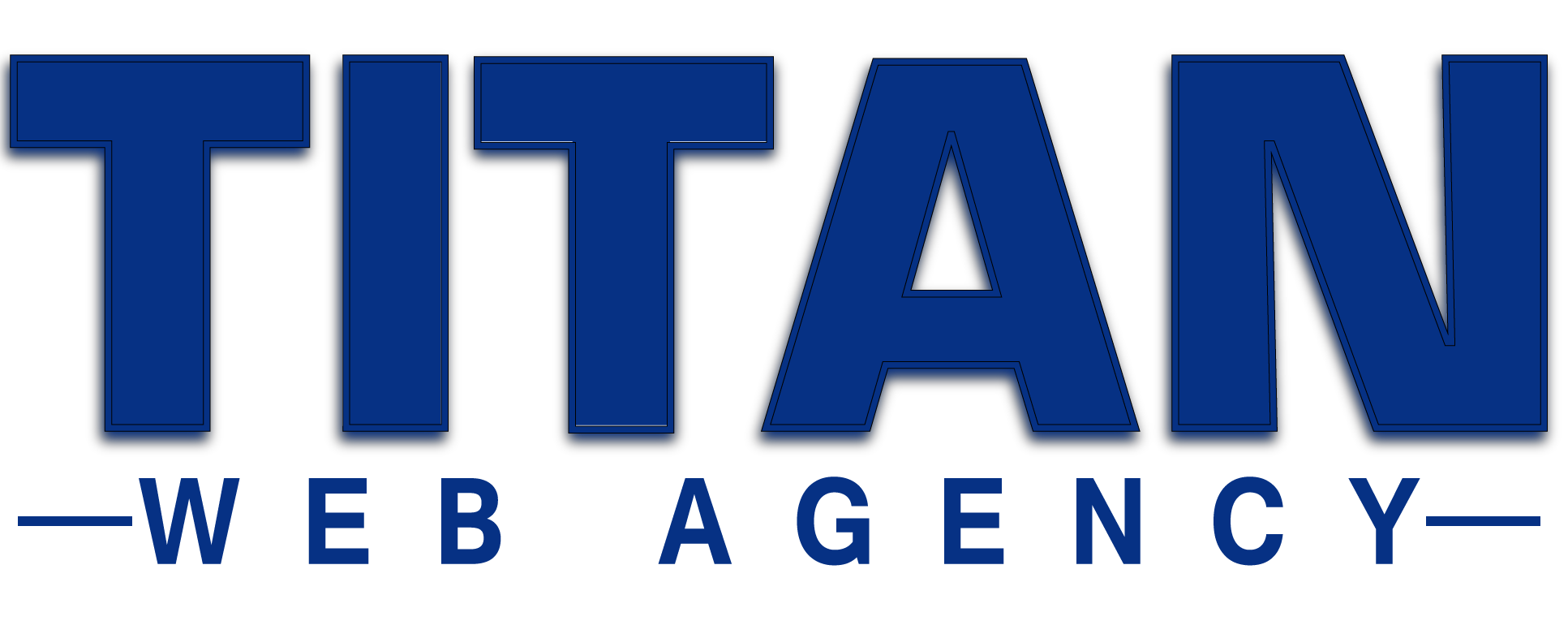








.png)
.png)


